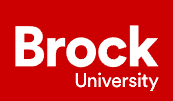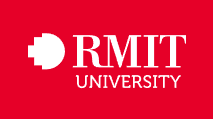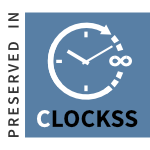Experimental Investigation on the Mechanism of Cutting Performance Enhancement of YG8N Cemented Carbide Tools with Tesla-Valve-Inspired Micro-Textures under MoS₂-Based Minimum Quantity Lubrication
DOI:
https://doi.org/10.63313/AJET.2001Keywords:
Tesla-valve micro-texture, YG8N cemented carbide, MoS₂ nanofluid, minimum-quantity lubrication, cutting performanceAbstract
To improve the wear resistance, heat dissipation and anti-adhesion capability of cemented carbide tools in machining titanium alloys, Tesla-valve-inspired anisotropic micro-textures were fabricated on the rake face of YG8N cemented carbide tools using femtosecond laser processing. Cutting experiments were carried out under MoS₂-based hybrid minimum-quantity lubrication (MQL). A tri-axial piezoelectric dynamometer, temperature sensors and surface characterization techniques were employed to systematically compare non-textured tools, forward-textured tools and reverse-textured tools at low (300 mm/s) and high (1000 mm/s) cutting speeds in terms of cutting force, friction coefficient, temperature distribution, tool wear and chip morphology. The results show that: the micro-textures significantly reduce the actual contact area between the tool and the workpiece and enhance both the storage and transport of cutting fluid, thereby improving lubrication and cooling conditions; at high cutting speeds, the forward-textured tool achieves reductions of about 28.1% in cutting force and 50% in friction coefficient compared with the non-textured tool, lowers the tool-tip temperature by roughly 50% and decreases the wear-band width by about 70%; the micro-textures promote chip curling and evacuation, suppressing the formation of built-up edge and adhesion layers and thus markedly extending tool life. This study elucidates the synergistic mechanism of lubrication and heat dissipation by Tesla-valve-inspired micro-textures in enhancing cutting performance, and provides both theoretical and experimental support for the design of high-performance cemented carbide cutting tools.
References
[1] LI A H, ZHANG R F, ZHAO J, et al. Study on Surface Integrity of Clean Cutting Machining of Titanium Alloy Based on Net Cutting Specific Energy[J]. Surface Technology, 2023, 52(12): 57-64.
[2] PANG M H, NIE Y F, MA L J. Effect of Symmetrical Conical Micro-grooved Texture on Tool–Chip Friction Property of WC-TiC/Co Cemented Carbide Tools[J]. The International Journal of Advanced Manufacturing Technology, 2018, 99(1-4): 737-746.
[3] WANG Q, CHEN X, AN Q L, et al. Research on Cutting Performance and Tool Life Improve-ment Methods of Titanium Alloy Ultra-high Speed Milling Tools[J]. Journal of Manufactur-ing Processes, 2024, 131:38-51.
[4] GONG P, ZHANG Y, CUI X, et al. Lubricant Transportation Mechanism and Wear Resistance of Different Arrangement Textured Turning Tools[J]. Tribology International, 2024, 196: 109704-.
[5] MEIRI K S, VASU V, GOPAL V A. Investigation of Thermal Conductivity and Rheological Properties of Vegetable Oil Based Hybrid Nanofluids Containing Cu–Zn Hybrid Nanoparti-cles[J]. Experimental Heat Transfer, 2016, 30(3): 205-217.
[6] TIAN C C, HONG W J, YUAN S, et al. Research on Cutting Performance and Processing Sur-face Quality of Micro-structured Composite-coated Tool: A Comprehensive Review[J]. The International Journal of Advanced Manufacturing Technology, 2024, 133(5-6): 2709-2743.
[7] THOMAS F, TOMAS V, TOMAS P. Wear and Friction of Self-lubricating Coatings Applied to Spur Gears in Fluid-free Aerospace Actuation Gearboxes[J]. Proceedings of the Institution of Mechanical Engineers, Part J: Journal of Engineering Tribology, 2024, 238(1): 26-43.
[8] CHENG X L, LIU Z J, ZHANG J B, et al. Tribology and Corrosion Barriers of WS2/MoS2/h-BN: Application in Ni-based Coatings and Simulated Studies[J]. Ceramics International, 2025, 51(6): 7613-7626.
[9] LIU Z W, YANG F Z, JIANG F L, et al. Effect of Nanoparticle Synergistic Micro-texture on Cutting Performance of Tool under Minimum Quantity Lubrication[J]. Surface Technology, 2024, 53(10): 183-195.
Downloads
Published
Issue
Section
License
Copyright (c) 2025 by author(s) and Erytis Publishing Limited.

This work is licensed under a Creative Commons Attribution 4.0 International License.





















